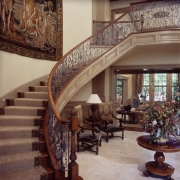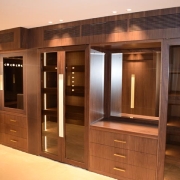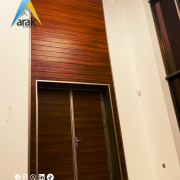Decorative designs are an essential part of modern engineering projects. They add a unique aesthetic touch and transform projects from purely functional structures into artistic creations that reflect innovation and creativity. With advancements in technology and engineering, integrating decorative designs has become more accessible and diverse, allowing engineers and designers to achieve the perfect balance between aesthetics and functionality. This article explores effective and sustainable ways to incorporate decorative designs into engineering projects.
1. The Importance of Decorative Designs in Engineering Projects
1. Enhancing Visual Identity
Decorative designs add a unique personality to projects, reflecting a specific identity. For instance, geometric patterns can represent cultural heritage or contemporary trends.
2. Improving User Experience
Decorative elements contribute to creating more comfortable and attractive environments, whether in residential, commercial, or public spaces.
3. Showcasing Professionalism and Innovation
Projects featuring distinctive decorative designs give the impression of attention to detail and aesthetics, enhancing their market value.
2. Steps to Integrate Decorative Designs into Engineering Projects
1. Study the Project
- Understand the project’s requirements and purpose.
- Identify the target audience to determine suitable decorative patterns.
2. Choose the Right Materials
- Metals: Such as iron and aluminum for architectural decorations.
- Wood: For designing doors and interior walls.
- Glass: To add a modern and transparent touch.
3. Utilize Modern Technology
- 3D Printing: To create intricate decorative models.
- Laser Cutting Techniques: For precise cutting and shaping of metals and wood.
- CAD Software: For designing and previewing decorations before implementation.
4. Combine Aesthetics with Practicality
Decorative designs should be appealing without compromising performance or durability. For example, patterns on facades can enhance ventilation and natural lighting.
3. Types of Decorative Designs Used in Engineering Projects
1. Geometric Designs
- Based on repetitive patterns such as triangles and squares.
- Widely used in facades and exterior walls.
2. Botanical Designs
- Inspired by nature, such as flowers and trees.
- Add a sense of calmness and beauty, especially in interiors.
3. Islamic and Arabic Designs
- Feature intricate patterns and calligraphy.
- Used in mosques and cultural buildings to enhance heritage.
4. Modern and Contemporary Designs
- Rely on clean lines and simple shapes.
- Suitable for modern buildings such as offices and hotels.
4. Modern Techniques in Implementing Decorative Designs
1. Using CNC Technology
CNC machines are used to cut and shape various materials with high precision, enabling the creation of complex designs effortlessly.
2. Laser Shaping
This technology allows for precise decorative designs using materials such as metal and wood.
3. 3D Printing
An ideal tool for producing complex decorative models without the need for expensive molds.
4. Advanced Coating Techniques
- Anodized Coating: Adds a luxurious finish to aluminum.
- Powder Coating: Provides durable and vibrant decorative finishes.
5. Applications of Decorative Designs in Engineering Projects
1. Architectural Facades
- Decorative designs add a unique character to buildings.
- Patterns can be used to improve thermal insulation and ventilation.
2. Ceilings and Walls
- Decorative elements enhance the aesthetics of interior spaces.
- Wood or gypsum can be used for creative designs.
3. Doors and Windows
- Decorations transform doors and windows into distinctive artistic pieces.
- Decorative glass can be incorporated to add a modern touch.
4. Outdoor Spaces
- Decorative designs beautify gardens and pathways.
- Metal patterns can be used in fences and outdoor ornaments.
6. Challenges in Integrating Decorative Designs and How to Overcome Them
1. Balancing Beauty and Functionality
- Solution: Collaborate with engineers and designers to ensure aesthetics do not compromise performance.
2. High Costs
- Solution: Utilize modern technologies like 3D printing to reduce expenses.
3. Material Compatibility
- Solution: Select materials that align with the project’s requirements and environmental conditions.
4. Execution Time
- Solution: Rely on automated processes to speed up production.
7. Tips for Successful Decorative Designs
- Plan Ahead: Ensure decorative elements are integrated into the project’s initial design.
- Choose Sustainable Materials: Use eco-friendly materials to promote project sustainability.
- Leverage Technology: Take advantage of modern tools to achieve precision and quality.
- Engage with Clients: Understand their expectations and ensure the design meets their needs.
Incorporating decorative designs into engineering projects is an important step toward enhancing aesthetics and functionality. By utilizing modern technology and selecting appropriate materials, innovative designs can be achieved that meet client requirements and reflect professionalism. Arak shadow is committed to delivering advanced engineering solutions that seamlessly integrate decorative designs with the highest standards of quality and efficiency.












Leave a Reply
Want to join the discussion?Feel free to contribute!